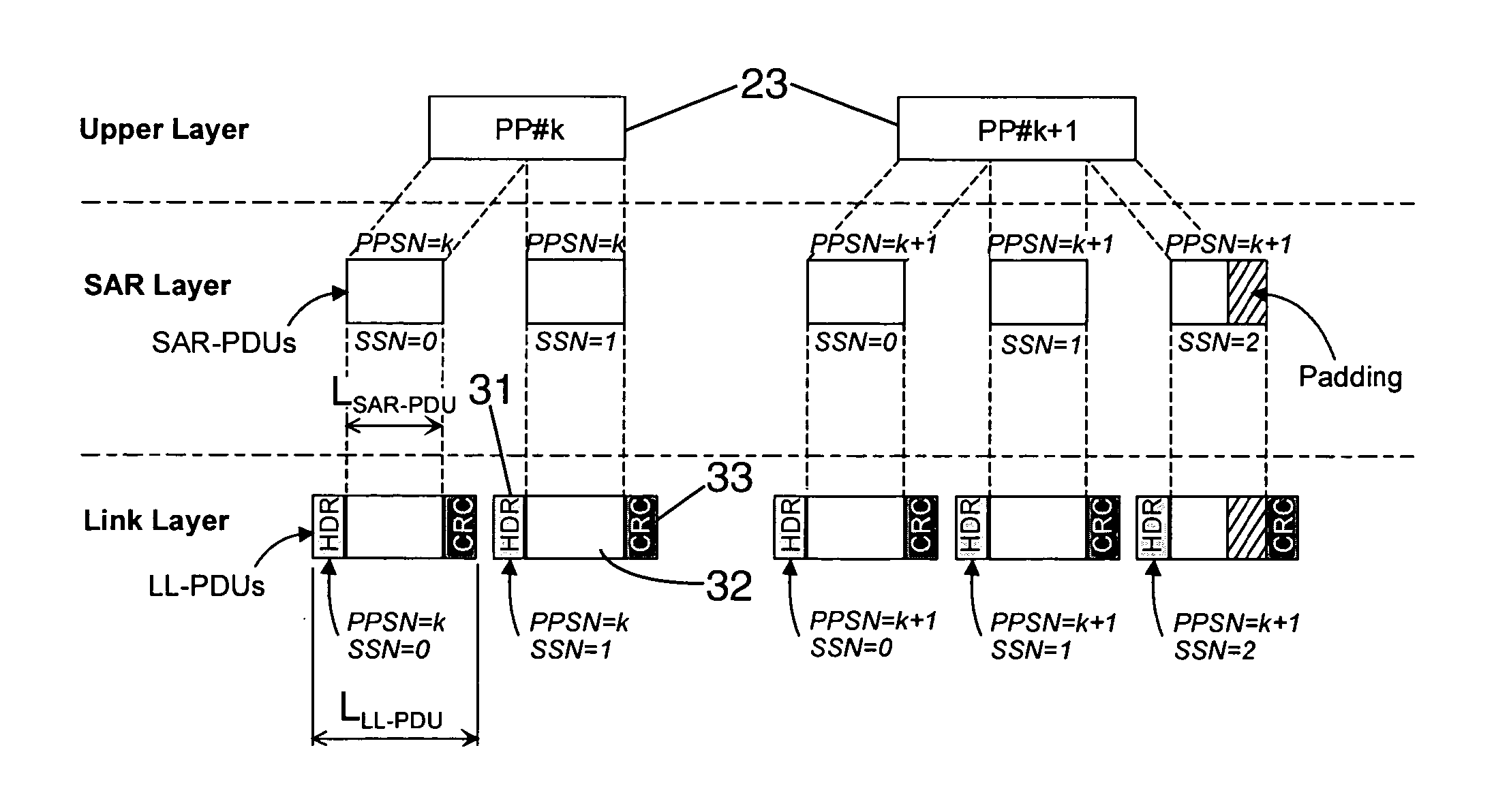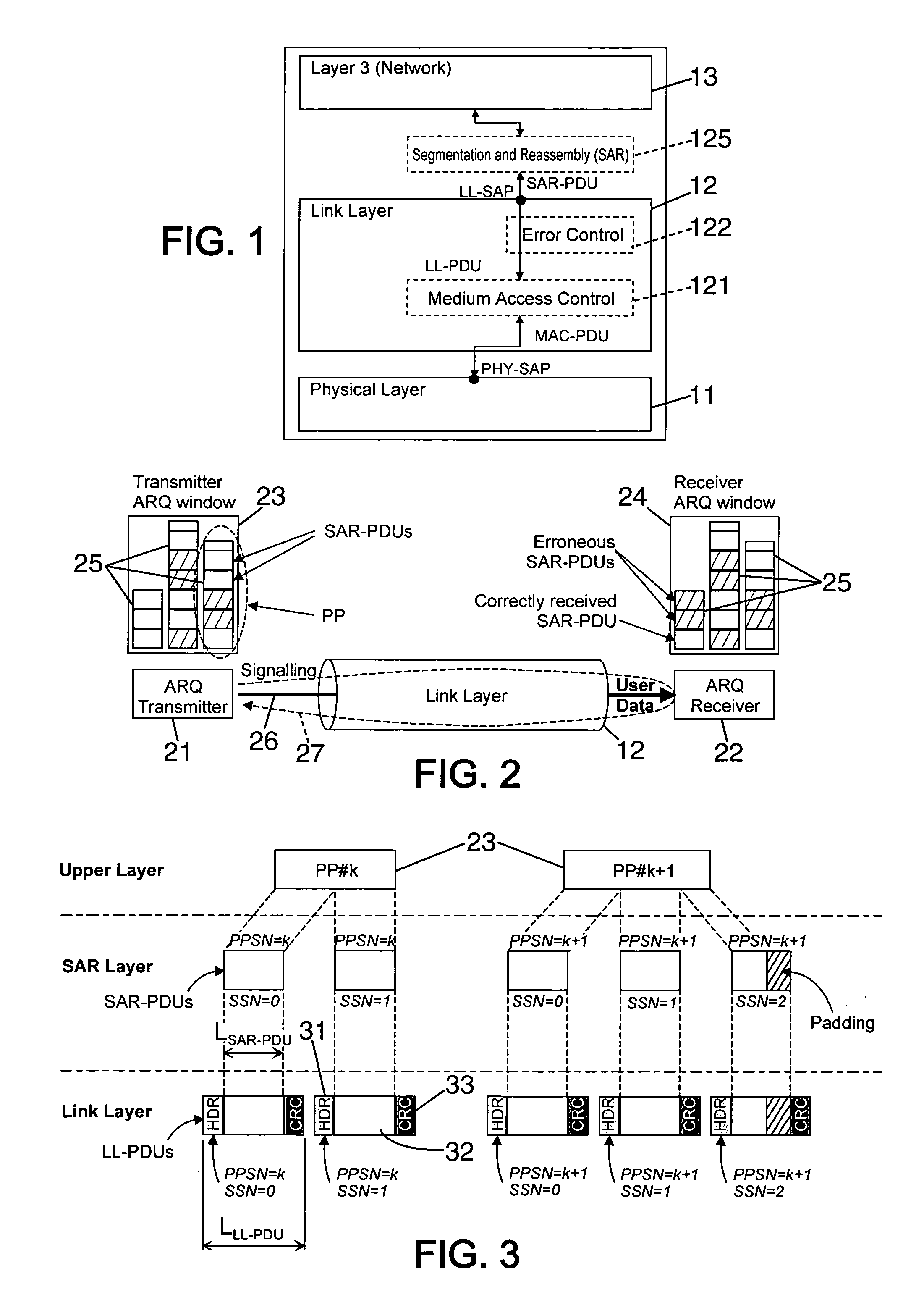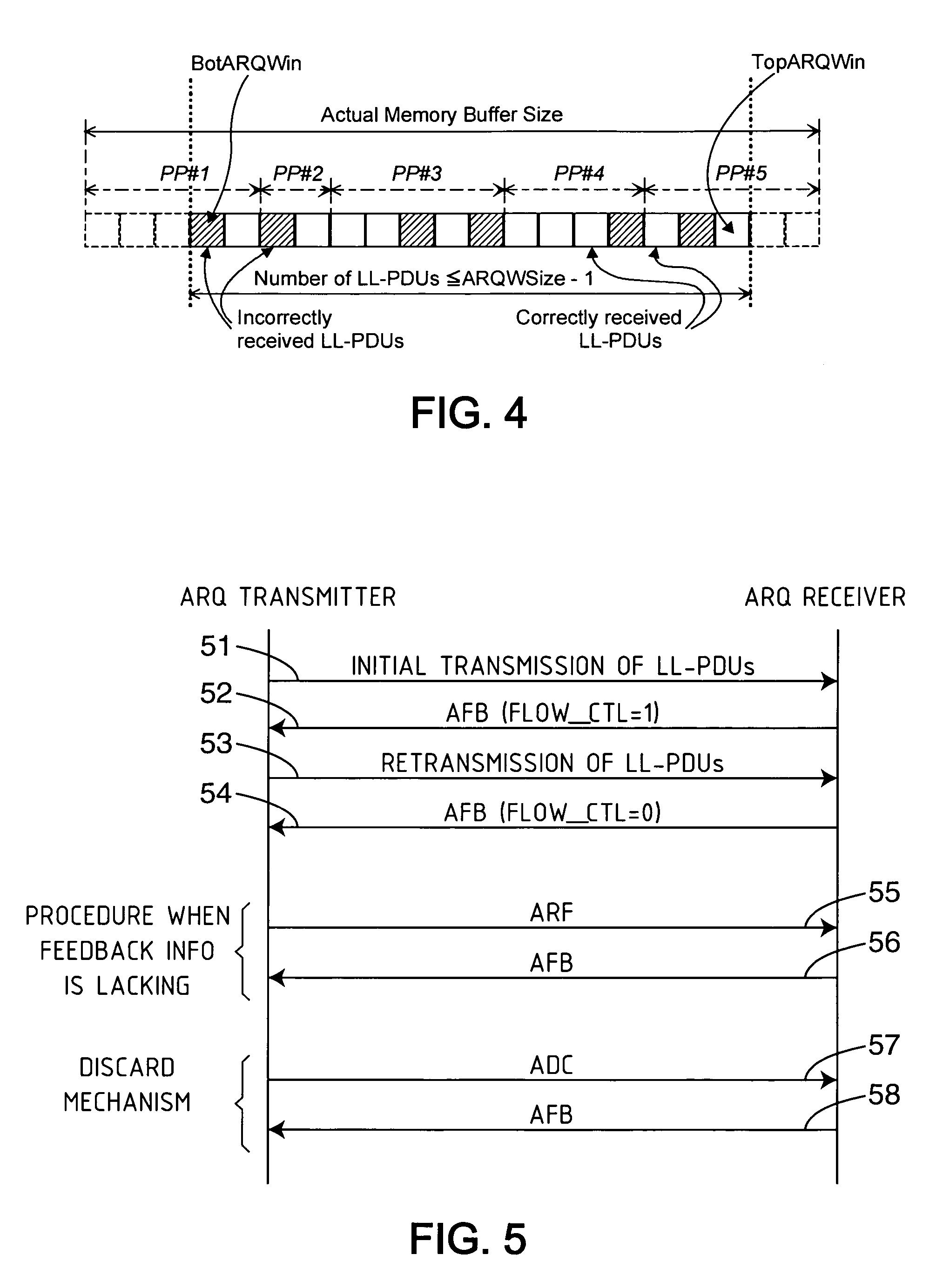Error control mechanism for a segment based link layer in a digital network
a technology of error control mechanism and digital network, applied in the field of communication system, can solve the problems of requiring a more sophisticated signalling that may need more resources, waste of resources when retransmitted, and loss of upper layer packets, and achieves the effects of simple required memory structure, simple generation and interpretation of signalling messages, and convenient implementation
- Summary
- Abstract
- Description
- Claims
- Application Information
AI Technical Summary
Benefits of technology
Problems solved by technology
Method used
Image
Examples
Embodiment Construction
[0040] The present invention is described herein below in one exemplary application as a protocol implemented within the data Link Layer (LL) layer of a network, which is compliant with the OSI (“Open System Interconnect”) model of ISO (“International Standardization Organization”). It will be appreciated, however, that the scope of the invention encompasses applications to any stack of communication protocol layers. In the drawings, like elements bear like references through all the Figures.
[0041] Definitions
[0042]FIG. 1 shows a part of a stack of communication protocol layers, namely the first three layers of the 7-layer network model according to OSI standard. The following description thereof is aimed at introducing some definitions which will be used in the remaining of this document.
[0043] A first layer 11, also known as the PHYsical (PHY) layer, provides a physical interface between many users. For instance, users are stations of a wireless or power line communication netw...
PUM
 Login to View More
Login to View More Abstract
Description
Claims
Application Information
 Login to View More
Login to View More - R&D
- Intellectual Property
- Life Sciences
- Materials
- Tech Scout
- Unparalleled Data Quality
- Higher Quality Content
- 60% Fewer Hallucinations
Browse by: Latest US Patents, China's latest patents, Technical Efficacy Thesaurus, Application Domain, Technology Topic, Popular Technical Reports.
© 2025 PatSnap. All rights reserved.Legal|Privacy policy|Modern Slavery Act Transparency Statement|Sitemap|About US| Contact US: help@patsnap.com



